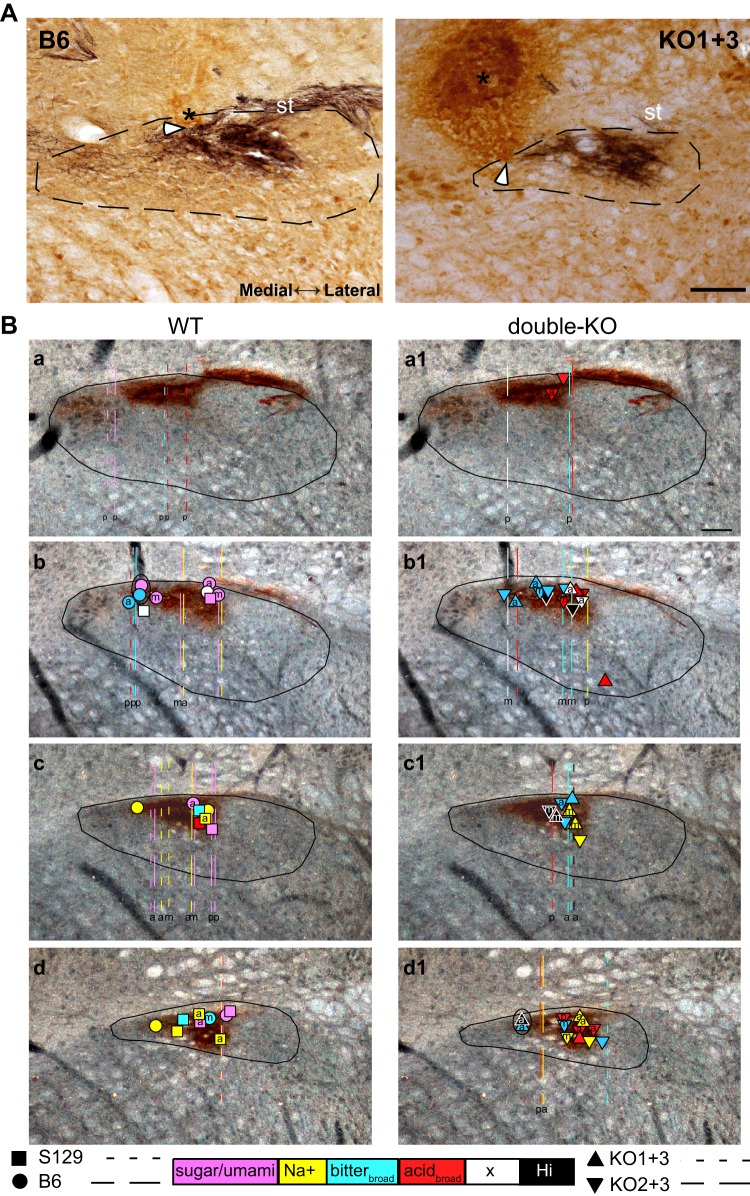Fig. 8.
A: bright-field photomicrographs of P2X2 (black)/NeuN (brown)-stained sections showing examples of wild-type (WT; B6) and double-knockout (double-KO; KO1+3) cases with lesions made at the recording sites. In the P2X2/NeuN-stained tissue, lesions were apparent on the basis of brown nonspecific immunostaining, presumably due to the anti-mouse secondary antibody for NeuN. Note that, in these cases, cells were recorded within 15 µM deep to the electrophysiologically encountered dorsal border of the nucleus, as evident by the first appearance of gustatory activity. Thus the base of the lesions (white arrowheads), not the lesion centers (asterisks), must correspond with the recording sites. Two cells were recorded simultaneously in both instances. The section from the B6 recordings is further caudal. Dotted lines denote the approximate borders of the nucleus; st, solitary tract. Scale = 100 µm. B: darkfield photomicrographs of coronal sections of the rostral nucleus of the solitary tract (rNST) immunostained for P2X2 with superimposed symbols and lines indicating locations of the recorded neurons. Sections are arranged from caudal to rostral (a,a1–d,d1). P2X2 staining, indicating the location of gustatory afferents, which appear dark brown. Left: WT neurons. Right: type 1 taste receptor (T1R) double-KO neurons. Symbols depict cases where lesions were made at the site of recording; dashed lines show the estimated trajectory of tracks through the nucleus in cases where lesions were made dorsal or ventral to the nucleus. Symbols and tracks are color-coded based on chemosensitive neuron clusters (see Fig. 2). The letters inside the symbols or at the base of the tracks denote receptive fields [anterior (a), posterior (p), or mixed (m)]. Cells were usually inside or just outside the P2X2 field. WT and double-KO neurons were recorded in similar locations. Neurons with posterior receptive fields were significantly further posterior; Na+ neurons were anterior. Scale = 100 µm. Lateral is to the right and medial is to the left in A and B.

